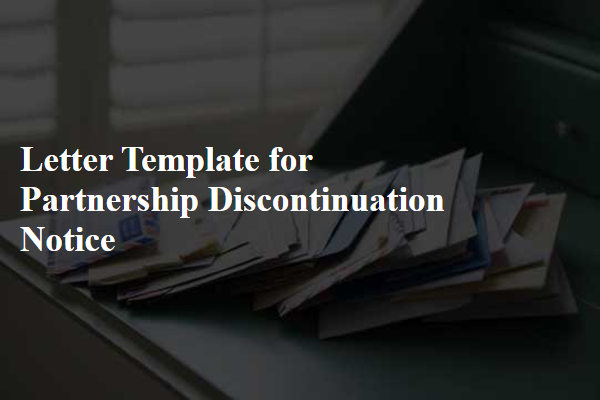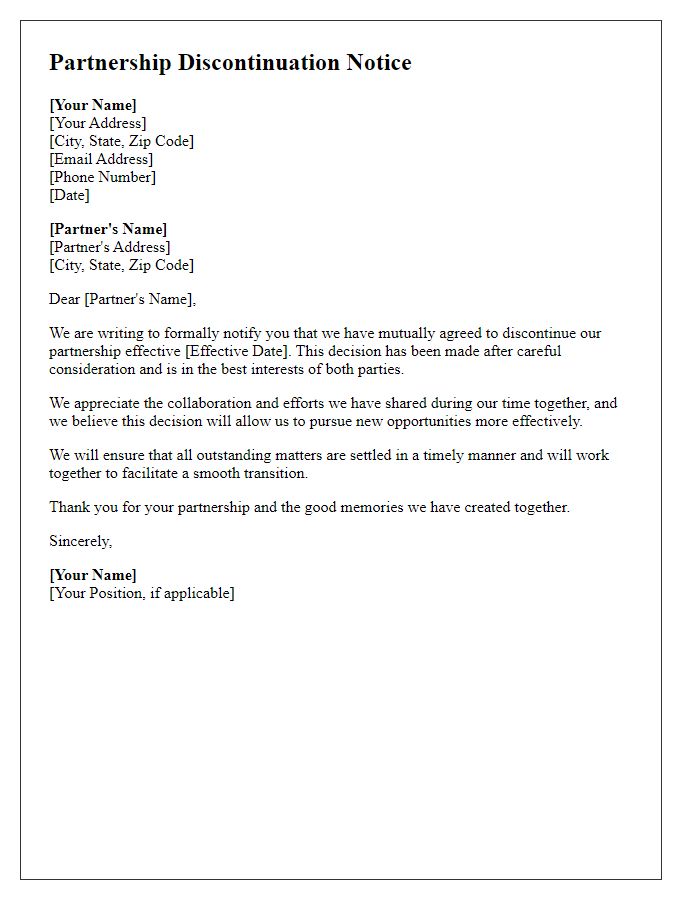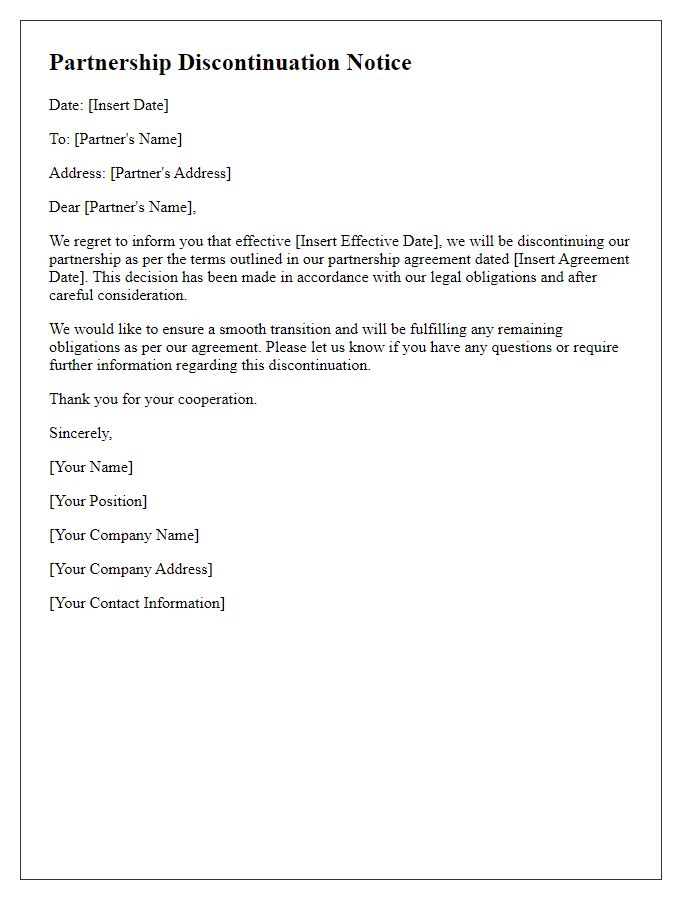When the time comes to end a business partnership, crafting a clear and professional letter is essential. This notice serves as a formal way to communicate your decision, ensuring that both parties are on the same page moving forward. It's important to address key details such as the reasons for the discontinuation and any final steps to be taken. Curious to learn more about how to structure your letter and what to include?

Header and Contact Information
Partnership discontinuation notices serve as formal communications to end a business relationship, often requiring clarity and professionalism. It typically begins with a header featuring the sender's company name, address, and contact information. Essential details include the date of the notice, recipient's name, title, and company address. This structured format ensures clarity and directs the communication effectively. The notice header sets the tone for the correspondence, emphasizing the importance of the partnership's conclusion while providing necessary context for the decision. Clear contact information facilitates follow-up discussions, ensuring both parties maintain open lines of communication.
Opening Statement and Purpose
Partnership discontinuation notifications typically serve as formal communications to inform involved parties about the decision to end a collaboration. It's crucial to convey this message clearly and respectfully, emphasizing the reasons for discontinuation. The decision to discontinue the partnership between [Company/Organization Name] and [Partner Name] arises from [specific circumstances or strategic considerations], which have led us to reassess our collaborative efforts. We aim to ensure a smooth transition for both parties while recognizing the contributions made throughout our relationship. This notice strives to maintain professionalism and respect in our communications, setting the tone for any necessary wrap-up discussions.
Terms of Termination
The process of partnership discontinuation requires formal communication that outlines the specific terms of termination. Clear details include the partnership termination date, which marks the end of financial and legal obligations. Documentation should specify responsibilities regarding outstanding accounts payable and receivable, as partners must ensure equitable division of remaining assets. Notifications regarding ongoing obligations, like contract disengagements or transition plans for clients or projects, are crucial for maintaining professionalism. Important legal aspects such as confidentiality agreements or non-compete clauses should be referenced to safeguard intellectual property. Additionally, it is essential to establish a timeline for the completion of the winding-up process, facilitating a smooth exit for all parties involved.
Future Relationship Intentions
A partnership discontinuation notice outlines the end of a collaborative agreement between businesses or individuals. It typically includes the specific reasons for the termination, the effective date of discontinuation, and any ongoing obligations or transitions, such as the resolution of outstanding financial commitments and the return of shared assets. The notice may emphasize intentions for future relationships, expressing a desire for potential collaboration in different capacities or acknowledging mutual respect achieved during the partnership. Clear communication can ensure a professional closure while maintaining positive rapport for possible future interactions.
Contact for Further Discussion
Partnership discontinuation can impact operational efficiency across multiple sectors, particularly in collaborative ventures involving stakeholders such as small businesses and larger corporate entities. Notifications often require adherence to legal frameworks, typically emphasizing the termination date (e.g., November 30, 2023) and outlining the responsibilities regarding assets and liabilities. Effective communication enhances understanding of potential ramifications on joint projects, such as shared marketing initiatives or resource allocations, making it vital for parties involved to schedule a discussion for any unresolved matters. This discussion can take place via a virtual meeting platform or a designated office location, ensuring an orderly transition process and maintaining professional relationships post-discontinuation.
Letter Template For Partnership Discontinuation Notice Samples
Letter template of partnership discontinuation notice for mutual agreement.

Letter template of partnership discontinuation notice due to financial reasons.

Letter template of partnership discontinuation notice for breach of contract.

Letter template of partnership discontinuation notice for personal reasons.

Letter template of partnership discontinuation notice with a request for final settlement.

Letter template of partnership discontinuation notice with gratitude for collaboration.

Letter template of partnership discontinuation notice for restructuring purposes.

Letter template of partnership discontinuation notice addressing future cooperation possibilities.

Letter template of partnership discontinuation notice citing changing business strategies.





Comments